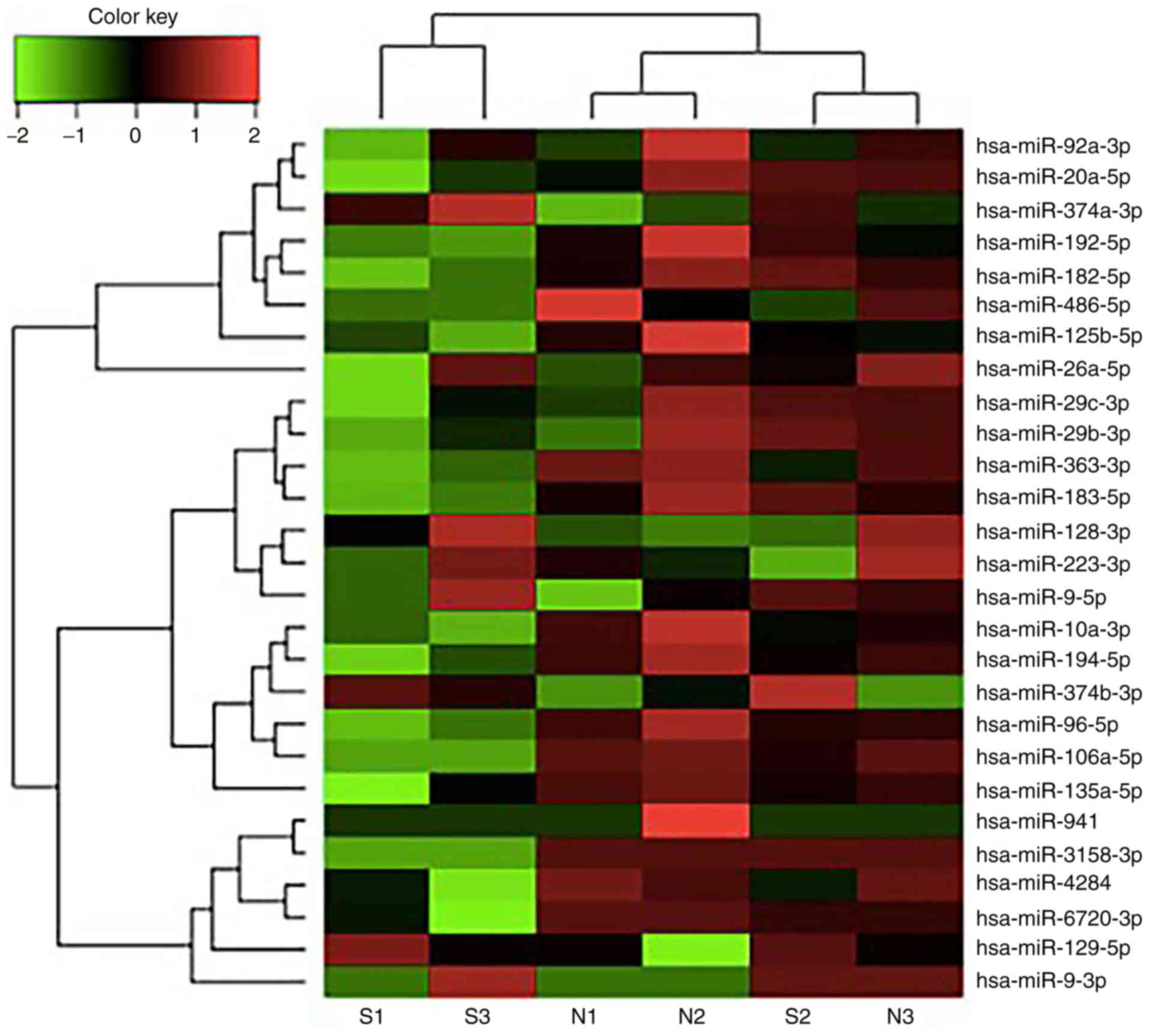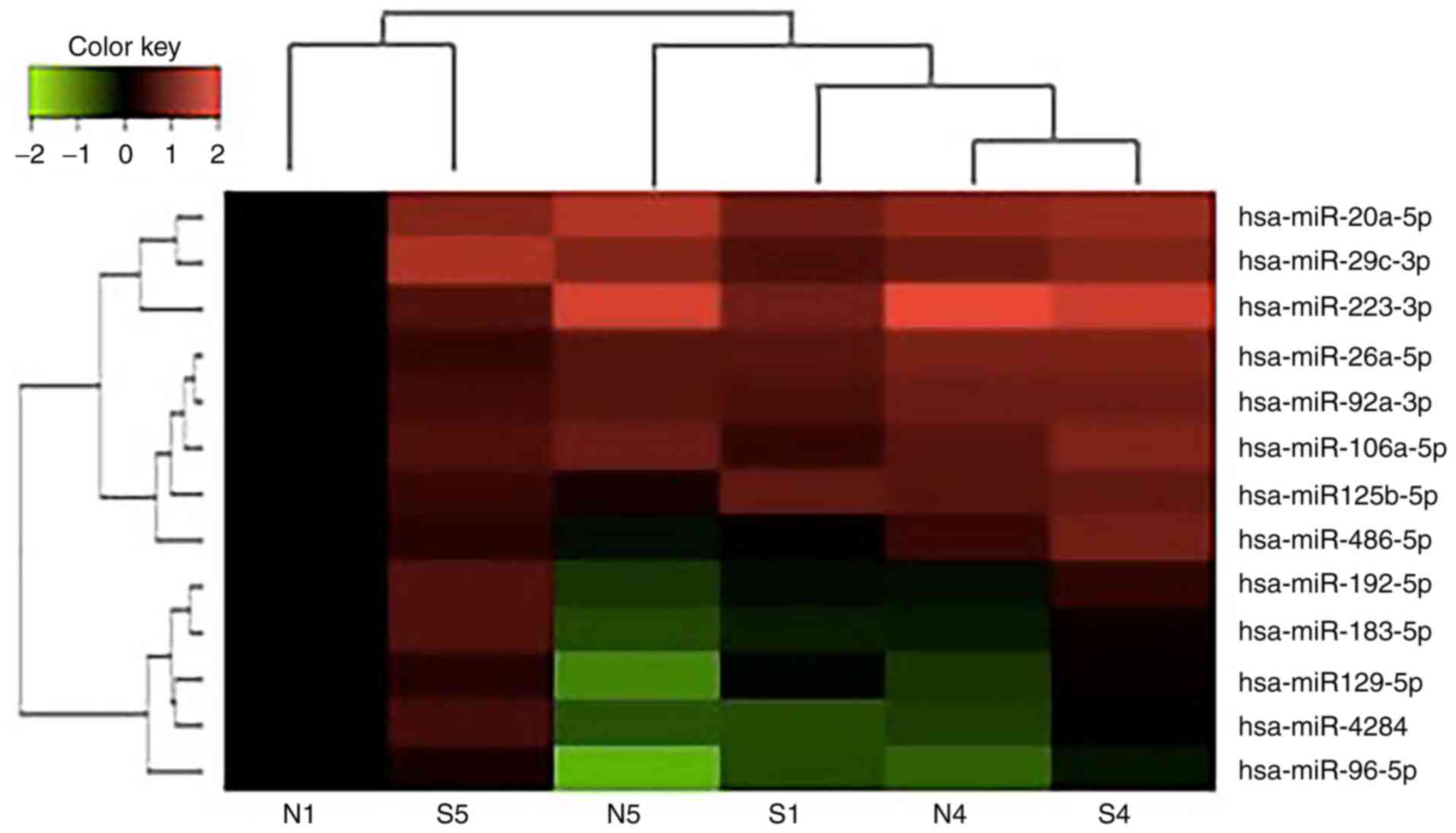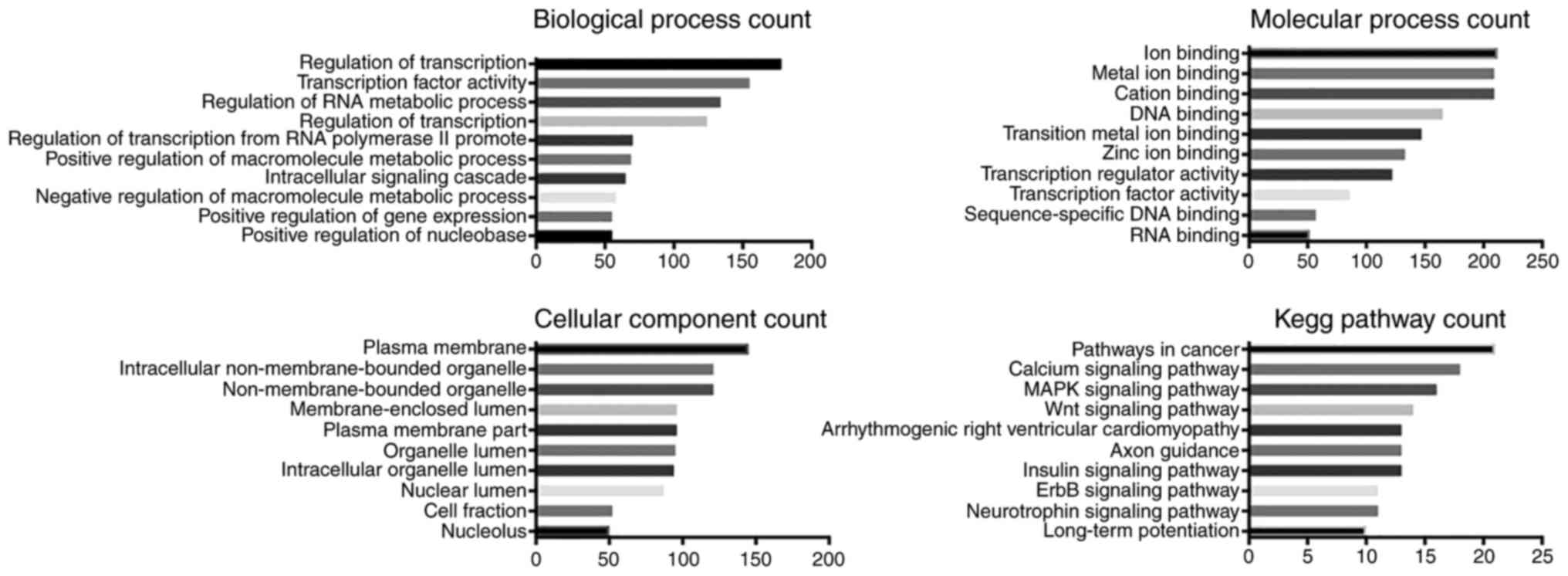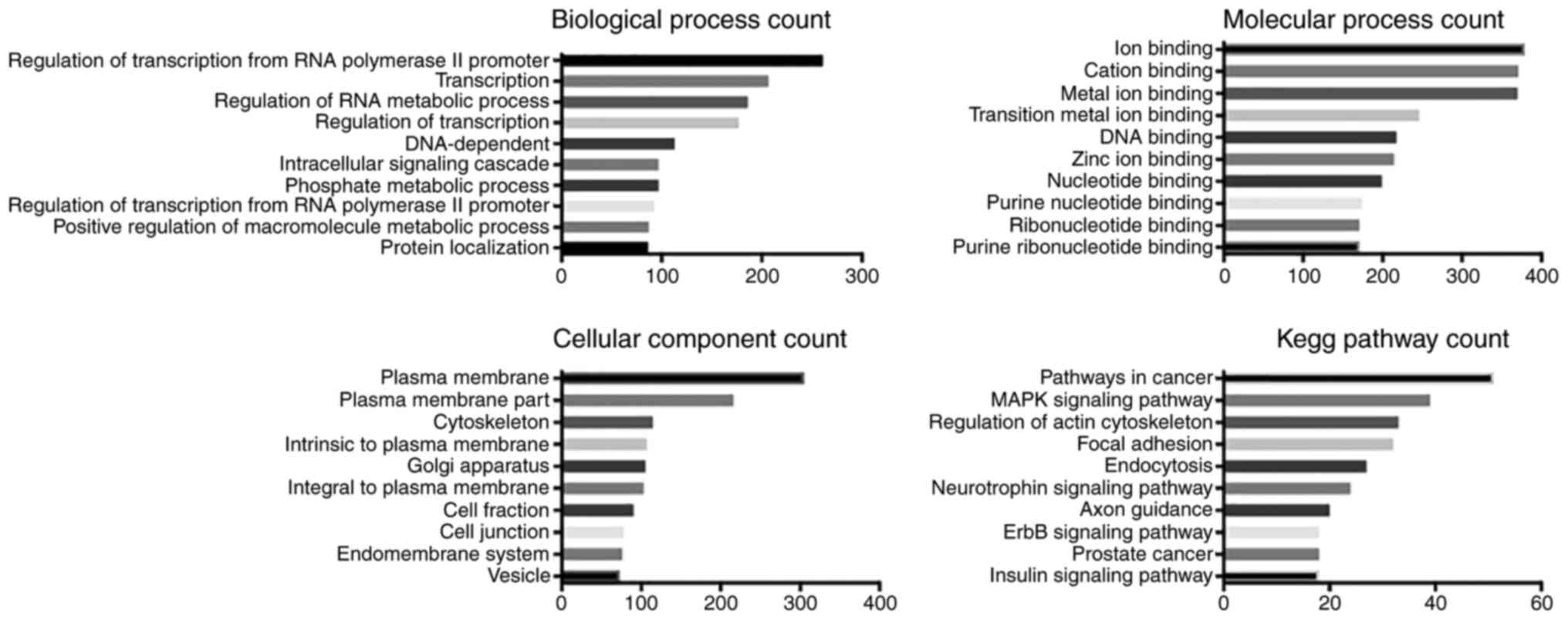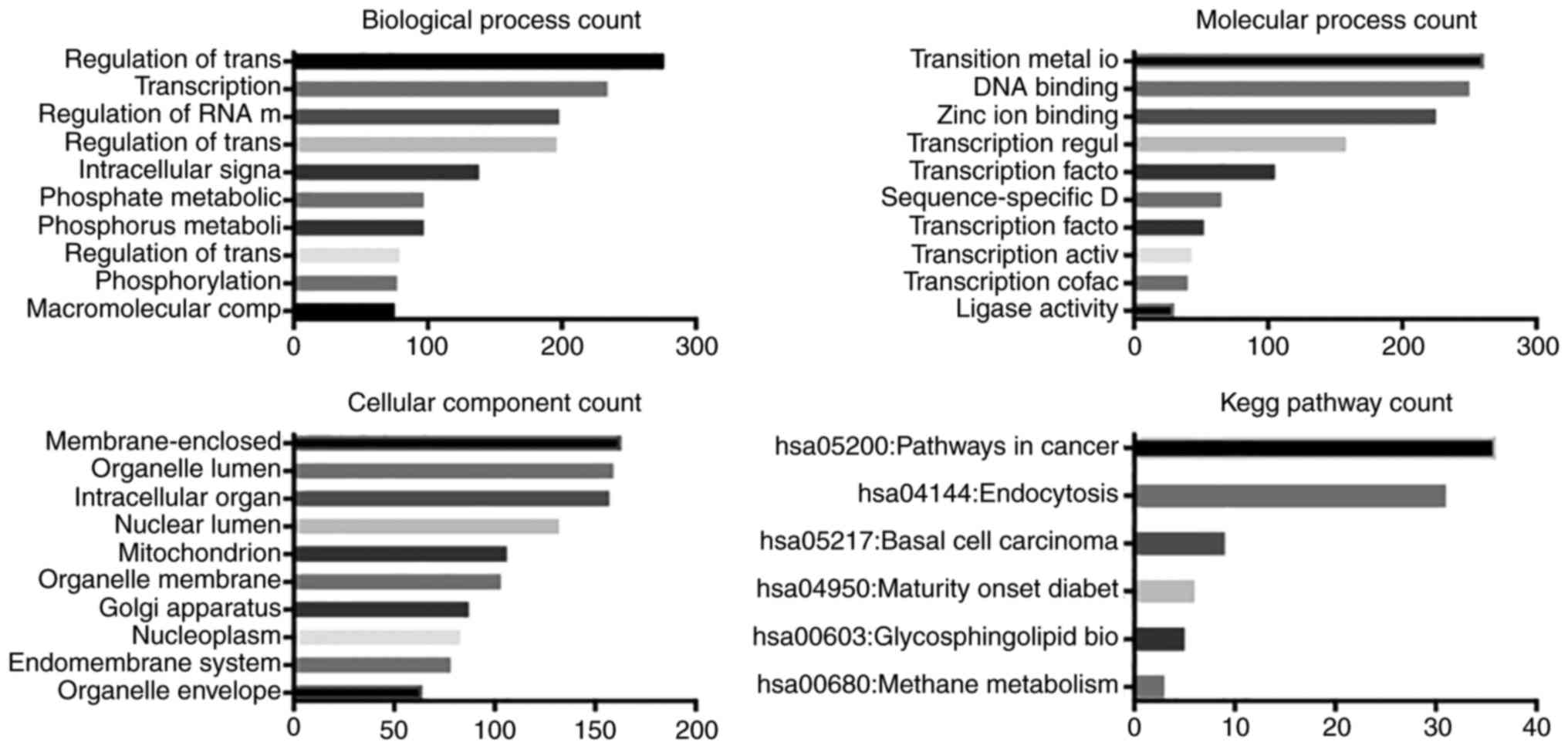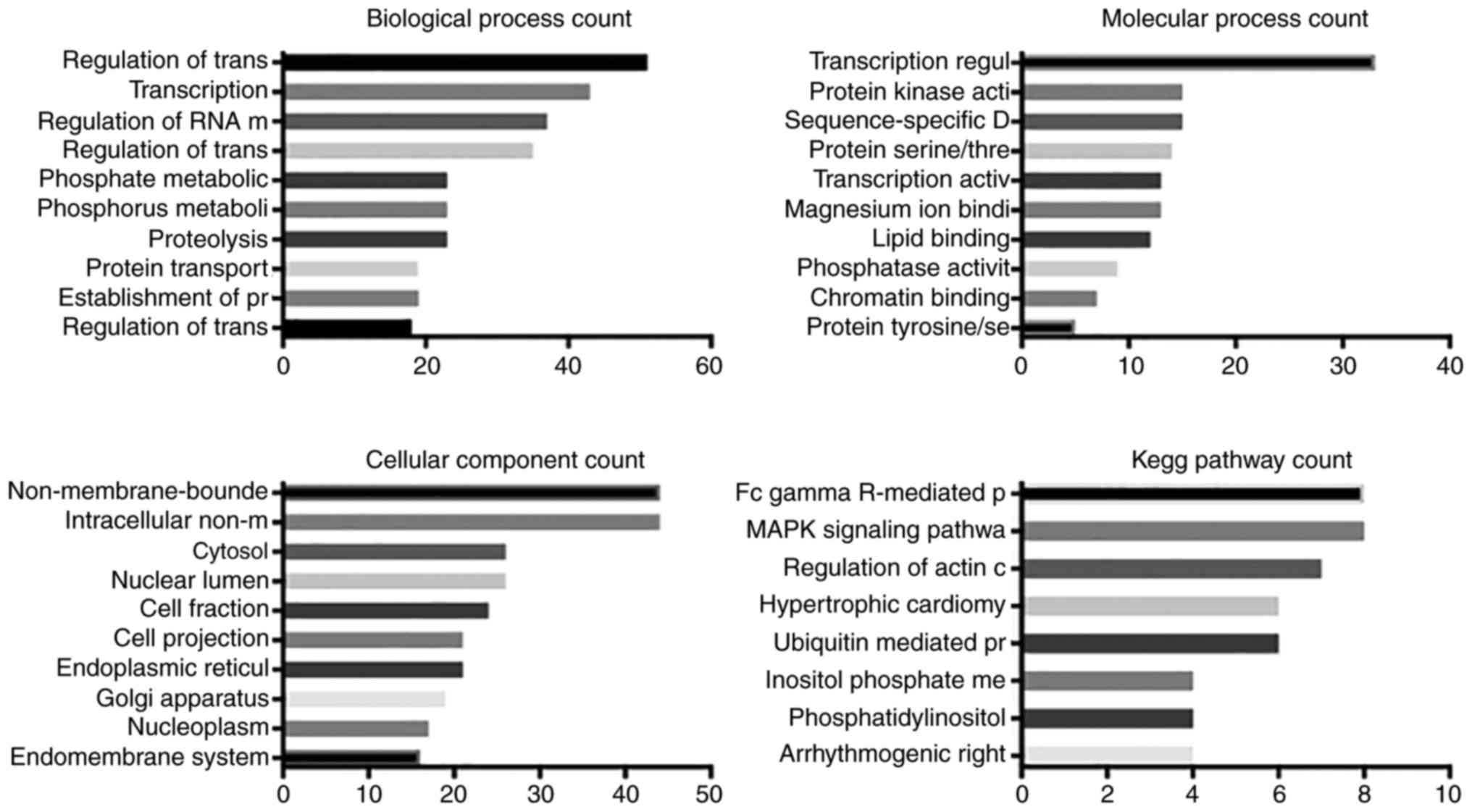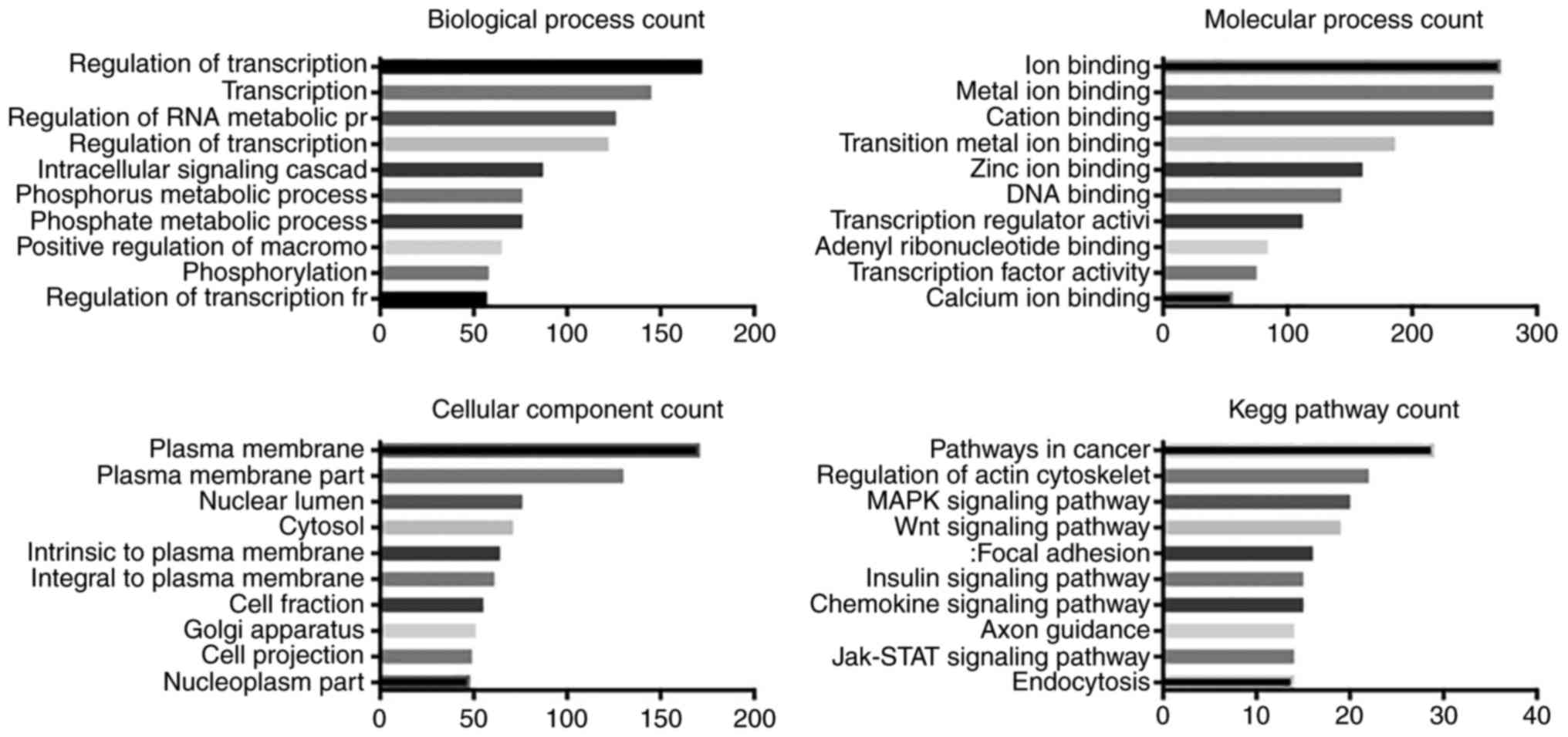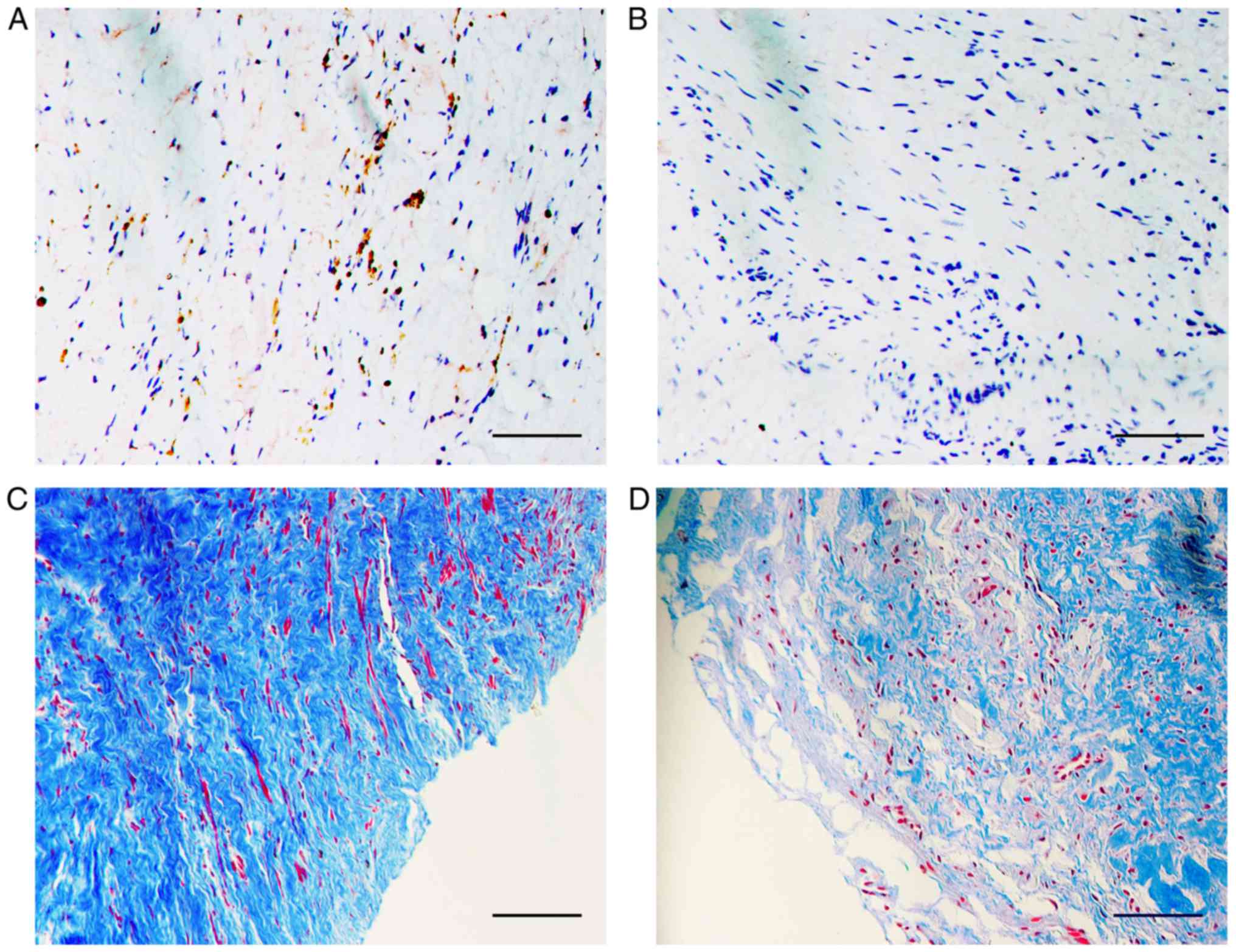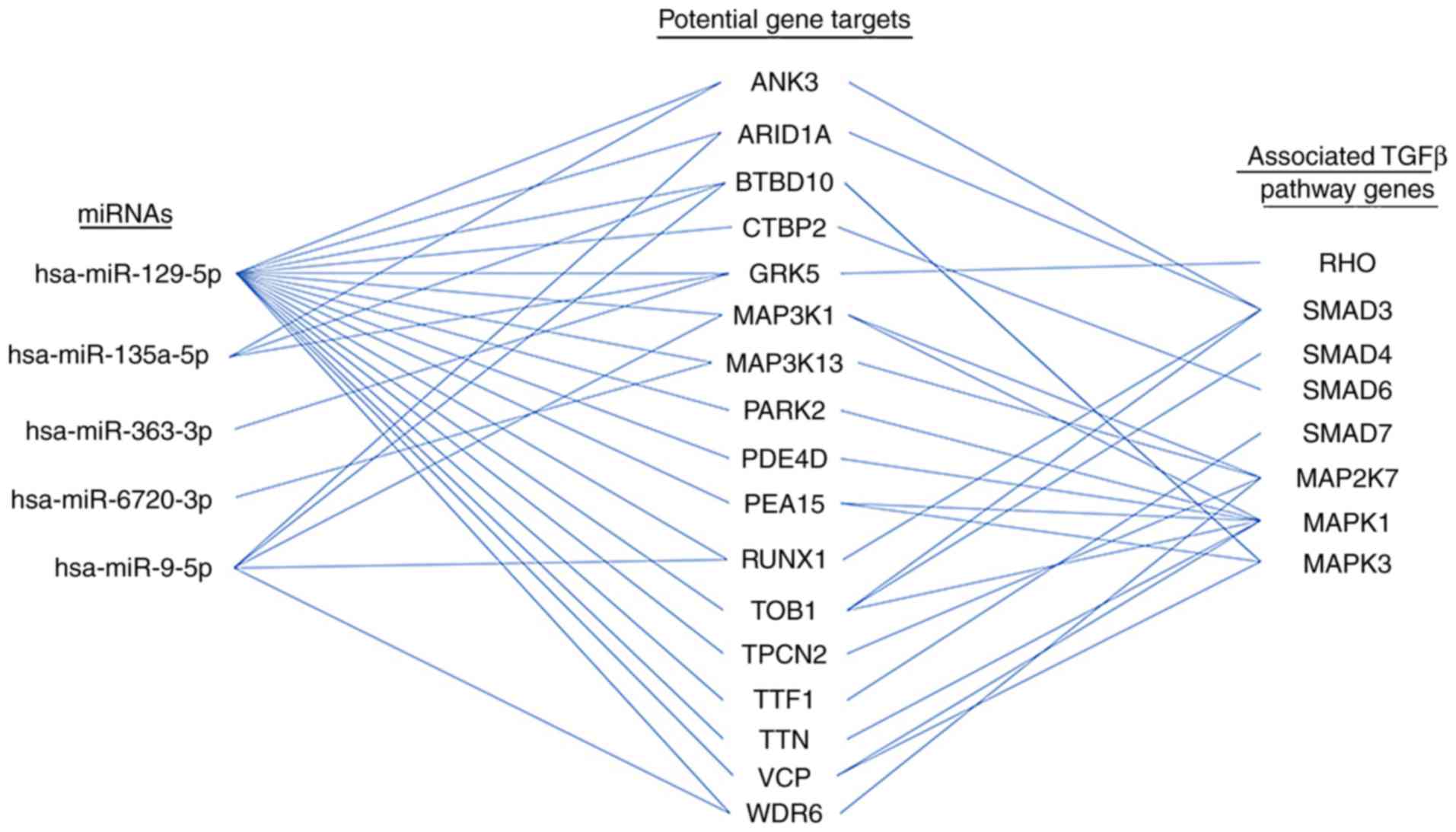|
1
|
Tritschler S, Roosen A, Füllhase C, Stief
CG and Rübben H: Urethral stricture: Etiology, investigation and
treatments. Dtsch Arztebl Int. 110:220–226. 2013.PubMed/NCBI
|
|
2
|
Osman NI, Hillary C, Bullock AJ, MacNeil S
and Chapple CR: Tissue engineered buccal mucosa for urethroplasty:
Progress and future directions. Adv Drug Deliv Rev. 82–83:69–76.
2015. View Article : Google Scholar
|
|
3
|
Hampson LA, McAninch JW and Breyer BN:
Male urethral strictures and their management. Nat Rev Urol.
11:43–50. 2014. View Article : Google Scholar :
|
|
4
|
Andrich DE, Dunglison N, Greenwell TJ and
Mundy AR: The long-term results of urethroplasty. J Urol.
170:90–92. 2003. View Article : Google Scholar : PubMed/NCBI
|
|
5
|
Lumen N, Hoebeke P and Oosterlinck W:
Urethroplasty for urethral strictures: Quality assessment of an
in-home algorithm. Int J Urol. 17:167–174. 2010. View Article : Google Scholar : PubMed/NCBI
|
|
6
|
Nerli RB, Neelagund SE, Guntaka A, Patil
S, Hiremath SC, Jali SM, Vernekar R and Hiremath MB: Staged buccal
mucosa urethroplasty in reoperative hypospadias. Indian J Urol.
27:196–199. 2011. View Article : Google Scholar : PubMed/NCBI
|
|
7
|
Zhang K, Qi E, Zhang Y, Sa Y and Fu Q:
Efficacy and safety of local steroids for urethra strictures: A
systematic review and meta-analysis. J Endourol. 28:962–968. 2014.
View Article : Google Scholar : PubMed/NCBI
|
|
8
|
Dubey D: The current role of direct vision
internal urethrotomy and self-catheterization for anterior urethral
strictures. Indian J Urol. 27:392–396. 2011. View Article : Google Scholar : PubMed/NCBI
|
|
9
|
O'Reilly S: MicroRNAs in fibrosis:
Opportunities and challenges. Arthritis Res Ther. 18:112016.
View Article : Google Scholar : PubMed/NCBI
|
|
10
|
Griffiths-Jones S: The microRNA registry.
Nucleic Acids Res. 32:D109–D111. 2004. View Article : Google Scholar :
|
|
11
|
Griffiths-Jones S, Grocock RJ, van Dongen
S, Bateman A and Enright AJ: miRBase: microRNA sequences, targets
and gene nomenclature. Nucleic Acids Res. 34:D140–D144. 2006.
View Article : Google Scholar :
|
|
12
|
Griffiths-Jones S, Saini HK, van Dongen S
and Enright AJ: miRBase: Tools for microRNA genomics. Nucleic Acids
Res. 36:D154–D158. 2008. View Article : Google Scholar :
|
|
13
|
Kozomara A and Griffiths-Jones S: miRBase:
Annotating high confidence microRNAs using deep sequencing data.
Nucleic Acids Res. 42:D68–D73. 2014. View Article : Google Scholar :
|
|
14
|
Kozomara A and Griffiths-Jones S: miRBase:
Integrating microRNA annotation and deep-sequencing data. Nucleic
Acids Res. 39:D152–D157. 2011. View Article : Google Scholar :
|
|
15
|
Livak KJ and Schmittgen TD: Analysis of
relative gene expression data using real-time quantitative PCR and
the 2−ΔΔCT method. Methods. 25:402–408. 2001. View Article : Google Scholar
|
|
16
|
Lewis BP, Burge CB and Bartel DP:
Conserved seed pairing, often flanked by adenosines, indicates that
thousands of human genes are microRNA targets. Cell. 120:15–20.
2005. View Article : Google Scholar : PubMed/NCBI
|
|
17
|
Enright AJ, John B, Gaul U, Tuschl T,
Sander C and Marks DS: MicroRNA targets in Drosophila. Genome Biol.
5:R12003. View Article : Google Scholar
|
|
18
|
Huang da W, Sherman BT and Lempicki RA:
Systematic and integrative analysis of large gene lists using DAVID
bioinfor-matics resources. Nat Protoc. 4:44–57. 2009. View Article : Google Scholar
|
|
19
|
Huang da W, Sherman BT and Lempicki RA:
Bioinformatics enrichment tools: Paths toward the comprehensive
functional analysis of large gene lists. Nucleic Acids Res.
37:1–13. 2009. View Article : Google Scholar
|
|
20
|
Ashburner M, Ball CA, Blake JA, Botstein
D, Butler H, Cherry JM, Davis AP, Dolinski K, Dwight SS, Eppig JT,
et al: Gene ontology: Tool for the unification of biology. The Gene
Ontology Consortium. Nat Genet. 25:25–29. 2000. View Article : Google Scholar : PubMed/NCBI
|
|
21
|
The Gene Ontology Consortium: Expansion of
the Gene Ontology knowledgebase and resources. Nucleic Acids Res.
45:D331–D338. 2017. View Article : Google Scholar :
|
|
22
|
Kanehisa M and Goto S: KEGG: Kyoto
encyclopedia of genes and genomes. Nucleic Acids Res. 28:27–30.
2000. View Article : Google Scholar
|
|
23
|
Li Y, An H, Pang J, Huang L, Li J and Liu
L: MicroRNA profiling identifies miR-129-5p as a regulator of EMT
in tubular epithelial cells. Int J Clin Exp Med. 8:20610–20616.
2015.
|
|
24
|
Nakashima T, Jinnin M, Yamane K, Honda N,
Kajihara I, Makino T, Masuguchi S, Fukushima S, Okamoto Y, Hasegawa
M, et al: Impaired IL-17 signaling pathway contributes to the
increased collagen expression in scleroderma fibroblasts. J
Immunol. 188:3573–3583. 2012. View Article : Google Scholar : PubMed/NCBI
|
|
25
|
Zhang Y, An J, Lv W, Lou T, Liu Y and Kang
W: miRNA-129-5p suppresses cell proliferation and invasion in lung
cancer by targeting microspherule protein 1, E-cadherin and
vimentin. Oncol Lett. 12:5163–5169. 2016. View Article : Google Scholar
|
|
26
|
Xu H, Hu Y and Qiu W: Potential mechanisms
of microRNA-129-5p in inhibiting cell processes including
viability, proliferation, migration and invasiveness of
glioblastoma cells U87 through targeting FNDC3B. Biomed
Pharmacother. 87:405–411. 2017. View Article : Google Scholar : PubMed/NCBI
|
|
27
|
Luan QX, Zhang BG, Li XJ and Guo MY:
MiR-129-5p is down-regulated in breast cancer cells partly due to
promoter H3K27m3 modification and regulates epithelial-mesenchymal
transition and multi-drug resistance. Eur Rev Med Pharmacol Sci.
20:4257–4265. 2016.PubMed/NCBI
|
|
28
|
Jiang Z, Wang H, Li Y, Hou Z, Ma N, Chen
W, Zong Z and Chen S: MiR-129-5p is down-regulated and involved in
migration and invasion of gastric cancer cells by targeting
interleukin-8. Neoplasma. 63:673–680. 2016. View Article : Google Scholar : PubMed/NCBI
|
|
29
|
Fu L, Chen Q, Yao T, Li T, Ying S, Hu Y
and Guo J: Hsa_circ_0005986 inhibits carcinogenesis by acting as a
miR-129-5p sponge and is used as a novel biomarker for
hepatocellular carcinoma. Oncotarget. 8:43878–43888.
2017.PubMed/NCBI
|
|
30
|
Fierro-Fernández M, Busnadiego Ó, Sandoval
P, Espinosa-Díez C, Blanco-Ruiz E, Rodríguez M, Pian H, Ramos R,
López-Cabrera M, García-Bermejo ML and Lamas S: miR-9-5p suppresses
pro-fibrogenic transformation of fibroblasts and prevents organ
fibrosis by targeting NOX4 and TGFBR2. EMBO Rep. 16:1358–1377.
2015. View Article : Google Scholar : PubMed/NCBI
|
|
31
|
Miguel V, Busnadiego O, Fierro-Fernández M
and Lamas S: Protective role for miR-9-5p in the fibrogenic
transformation of human dermal fibroblasts. Fibrogenesis Tissue
Repair. 9:72016. View Article : Google Scholar : PubMed/NCBI
|
|
32
|
Karatas OF, Suer I, Yuceturk B, Yilmaz M,
Oz B, Guven G, Cansiz H, Creighton CJ, Ittmann M and Ozen M:
Identification of microRNA profile specific to cancer stem-like
cells directly isolated from human larynx cancer specimens. BMC
Cancer. 16:8532016. View Article : Google Scholar : PubMed/NCBI
|
|
33
|
Wang Y, Chen J, Lin Z, Cao J, Huang H,
Jiang Y, He H, Yang L, Ren N and Liu G: Role of deregulated
microRNAs in non-small cell lung cancer progression using
fresh-frozen and formalin-fixed, paraffin-embedded samples. Oncol
Lett. 11:801–808. 2016. View Article : Google Scholar : PubMed/NCBI
|
|
34
|
Wang SH, Zhang WJ, Wu XC, Weng MZ, Zhang
MD, Cai Q, Zhou D, Wang JD and Quan ZW: The lncRNA MALAT1 functions
as a competing endogenous RNA to regulate MCL-1 expression by
sponging miR-363-3p in gallbladder cancer. J Cell Mol Med.
20:2299–2308. 2016. View Article : Google Scholar : PubMed/NCBI
|
|
35
|
Wang Y, Chen T, Huang H, Jiang Y, Yang L,
Lin Z, He H, Liu T, Wu B, Chen J, et al: miR-363-3p inhibits tumor
growth by targeting PCNA in lung adenocarcinoma. Oncotarget.
8:20133–20144. 2017.PubMed/NCBI
|
|
36
|
Cochetti G, Poli G, Guelfi G, Boni A,
Egidi MG and Mearini E: Different levels of serum microRNAs in
prostate cancer and benign prostatic hyperplasia: Evaluation of
potential diagnostic and prognostic role. OncoTargets Ther.
9:7545–7553. 2016. View Article : Google Scholar
|
|
37
|
Hu F, Min J, Cao X, Liu L, Ge Z, Hu J and
Li X: MiR-363-3p inhibits the epithelial-to-mesenchymal transition
and suppresses metastasis in colorectal cancer by targeting Sox4.
Biochem Biophys Res Commun. 474:35–42. 2016. View Article : Google Scholar : PubMed/NCBI
|
|
38
|
Van Renne N, Roca Suarez AA, Duong FH,
Gondeau C, Calabrese D, Fontaine N, Ababsa A, Bandiera S,
Croonenborghs T, Pochet N, et al: miR-135a-5p-mediated
downregulation of protein tyrosine phosphatase receptor delta is a
candidate driver of HCV-associated hepatocarcinogenesis. Gut:
gutjnl. 2016:3122702017.
|
|
39
|
Vejdovszky K, Sack M, Jarolim K, Aichinger
G, Somoza MM and Marko D: In vitro combinatory effects of the
Alternaria mycotoxins alternariol and altertoxin II and potentially
involved miRNAs. Toxicol Lett. 267:45–52. 2017. View Article : Google Scholar
|
|
40
|
Mak JC, Chuang TT, Harris CA and Barnes
PJ: Increased expression of G protein-coupled receptor kinases in
cystic fibrosis lung. Eur J Pharmacol. 436:165–172. 2002.
View Article : Google Scholar : PubMed/NCBI
|
|
41
|
Cannavo A, Liccardo D, Eguchi A, Elliott
KJ, Traynham CJ, Ibetti J, Eguchi S, Leosco D, Ferrara N, Rengo G
and Koch WJ: Myocardial pathology induced by aldosterone is
dependent on non-canonical activities of G protein-coupled receptor
kinases. Nat Commun. 7:108772016. View Article : Google Scholar : PubMed/NCBI
|
|
42
|
Sorriento D, Santulli G, Fusco A,
Anastasio A, Trimarco B and Iaccarino G: Intracardiac injection of
AdGRK5-NT reduces left ventricular hypertrophy by inhibiting
NF-κB-dependent hyper-trophic gene expression. Hypertension.
56:696–704. 2010. View Article : Google Scholar : PubMed/NCBI
|
|
43
|
Nakaya M, Chikura S, Watari K, Mizuno N,
Mochinaga K, Mangmool S, Koyanagi S, Ohdo S, Sato Y, Ide T, et al:
Induction of cardiac fibrosis by β-blocker in G protein-independent
and G protein-coupled receptor kinase 5/β-Arrestin2-dependent
signaling pathways. J Biol Chem. 287:35669–35677. 2012. View Article : Google Scholar : PubMed/NCBI
|
|
44
|
Richards TL, Minor K and Plato CF: Effects
of transforming growth factor-beta (TGF-β) receptor I inhibition on
renal biomarkers and fibrosis in unilateral ureteral occluded (UUO)
Mice. FASEB J. 31(1030): 10332017.
|
|
45
|
Penn JW, Grobbelaar AO and Rolfe KJ: The
role of the TGF-β family in wound healing, burns and scarring: A
review. Int J Burns Trauma. 2:18–28. 2012.
|
|
46
|
Zhan M and Kanwar YS: Hierarchy of
molecules in TGF-β signaling relevant to myofibroblast activation
and renal fibrosis. Am J Physiol Renal Physiol. 307:F385–F387.
2014. View Article : Google Scholar : PubMed/NCBI
|















